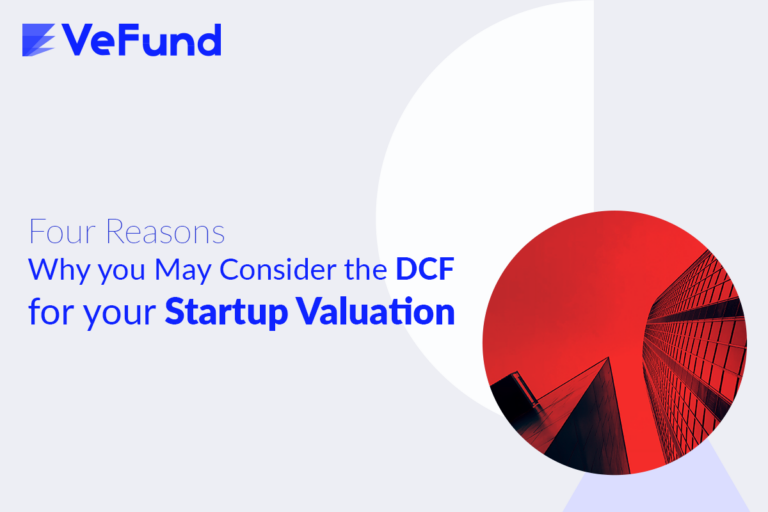Planning for a Startup Financial Projection? Here is What You Need to Prepare
Making financial forecasts for your business is no easy task. It takes rigorous research about the industry and the dynamics of the business model. The good news is, once done, you will be all set to enjoy its benefits:
- Conducting your DCF valuation: check our VeFund valuation calculator.
- Impressing investors: by showing them you did your homework and the potential of the startup.
- Being proactive: running different scenarios and awareness of the financials within your company will make you lead and guide with knowledge.
To ease up the forecasting process, we’re gonna take you through the items you need to gather before you start.
- Company’s historical data
If your company has been running for at least several months, you will need to gather all the financial-related data that happened in the startup’s lifetime. Your actual revenues and expenses are highly valuable for a healthy forecasting.
Depending on the startup’s case, the historical data can be used in several ways. You can use them to measure the profitability margins (Gross profit margin, EBITDA margin, … etc). Another use can be in estimating the revenues through the customer base growth rate. There are several ways to manipulate the data depending on your business case.
- Competition scene
Being aware of the competition scene is an important element. Make sure you did your research on the domestic, regional, and global competitors in your industry. You probably have identified the competitors before, but new players may have entered since your last research. Make sure your knowledge is up to date.
You also need to identify the shape of the market. Is it fragmented or concentrated? This is needed to determine your expansion strategy. It helps in answering how likely it is to gain additional market share.
- TAM, SAM, SOM Model
This model defines the opportunities ahead for your product. If you’re unfamiliar with these terms, here is what they stand for:
- Total Addressable Market (TAM): total market for your product.
- Serviceable Available Market (SAM): percentage of the TAM you can acquire based on your business case, such as location. This is your target.
- Serviceable Obtainable Market (SOM): percentage of the SAM you can realistically capture.
Defining these numbers will directly help you in setting your revenue forecasts/goals.
- Pricing Plan
Are you going to set pricing based on cost, customer, or competition? Are you going to make sales discounts or bundles? Having a clear pricing strategy is necessary for forecasting revenues.
You can also try multiple scenarios in the forecasting model to check how pricing affects your profitability.
- Cost Plans
Operations, marketing, salaries, rents, and everything essential to the business should be accounted for. Your numbers don’t have to be accurate. In modeling, rough estimation is key.
Historical data can help greatly here. However, if you’re just starting your company or unsure about certain costs, use market research and your network and intelligence to get to realistic estimates.
- Fixed Costs Depreciation and Amortization
When you buy heavy equipment for the business that should last 10 years, this is an asset and not an expense. In accounting, we can’t put its cost directly under the year of purchase. This ruins profitability altogether.
Rather, we spread out the cost over its life-time under the name of depreciation. In our example, if the cost of the equipment is $1 million, we should report a depreciation expense of $100k ($ 1m / 10) every year.
Amortization runs on the same concept. The difference is amortization is used for intangible assets (e.g. intellectual property), whereas depreciation is used for tangible assets (e.g. equipment).
- Profitability Margins
Profitability margins are ratios against the sales revenues. Gross profit margin, for example, measures the profit after deducting direct costs over the revenues. EBITDA margin accounts for the operations costs. And net income margin accounts for all the expenses by the business.
You can identify these margins through the startup’s historical data. It is preferable to also look for the margins of the competitors and companies within the same or slightly different industries. These ratios will help you in identifying your targets and where you stand against the market.
- Taxes
Understand the startup’s obligations toward taxes and consider the expenses in your model. You should also look for potential tax benefits based on your country.
- Loans
In case you plan to depend on loans along with equity, apply the intended loans and interests associated.
Forecasting is a truly heavy task. This is why it shows your authenticity and is admired by investors. When you’re done with forecasting, VeFund’s valuation calculator is there for you to take on the rest of the financial work. All it takes is plugging your forecasts in the calculator’s financial section and it will calculate your DCF valuation straight away.






